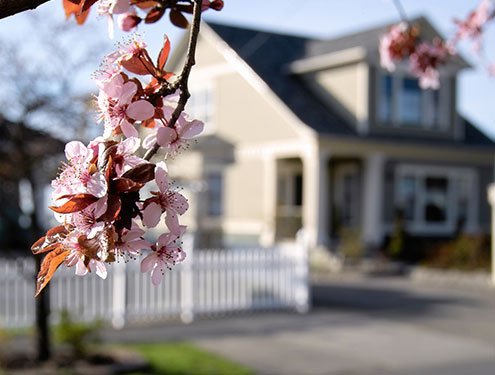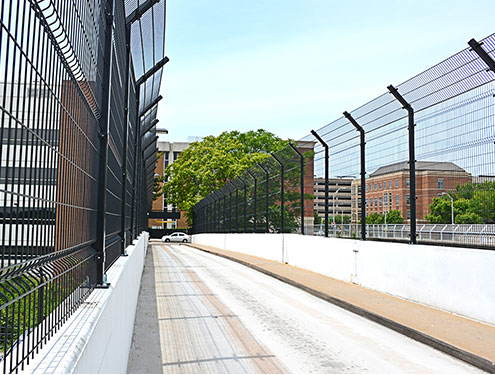 | The rise of Homeowner Associations (HOAs) in recent years has brought with it a surge of regulations governing property modifications. Before you rush out to install the fence of your dreams, it’s essential to understand the HOA approval process and avoid potential pitfalls that could derail your project.One of the biggest mistakes homeowners make when planning a fence installation is assuming their design will automatically meet HOA regulations. Even if your neighbors have a similar fence, there’s no guarantee their installation was approved—or that the same rules apply today.This guide from residential fencing experts provides practical tips to navigate HOA approval for your fence project while avoiding unnecessary stress and expenses. |
Contents
The Importance of HOA Approval
HOA approval is a critical step in any exterior home improvement project, especially for fence installations. Homeowner Associations enforce specific bylaws to maintain community standards, aesthetics, and property values. These regulations often dictate acceptable fence materials, colors, heights, and even placement. Without proper approval, you risk fines, mandatory removal of your fence, or additional costs to replace it with an approved design. Many homeowners learn this lesson the hard way, often after installing a fence, only to discover it violates HOA rules. For example, one homeowner contracted a chain-link fence installation without verifying her HOA's regulations. Midway through the project, she was informed that chain-link fences were prohibited in her community. She had to halt the project, remove the unfinished fence, and install a vinyl or ornamental aluminum fence instead—both of which were HOA-approved options.Common HOA Fence Restrictions
HOAs can vary widely in their rules, but there are several common restrictions to be aware of when planning your fence:- Prohibited Materials: Many HOAs disallow chain-link, split-rail, or wire containment fences, favoring more visually appealing options like vinyl, wood, or ornamental aluminum.
- Height Limits: Your fence may need to adhere to specific height restrictions, typically no more than 6 feet for privacy fences.
- Color and Finish: HOAs may require neutral or community-standard colors. Bright or unconventional finishes may not be allowed.
- Placement Rules: Setback regulations dictate how close a fence can be to property lines, sidewalks, or streets.
- Uniformity: HOAs often require fences to match or complement existing designs in the neighborhood.
Steps to Secure HOA Approval
Follow these steps to ensure your fence project meets HOA guidelines and receives prompt approval:1. Thoroughly Review HOA Regulations
Start by obtaining the most recent copy of your HOA’s regulations. Look for any sections addressing exterior modifications or fencing specifically. If any rules are unclear, reach out to the HOA board for clarification. Pro Tip: Document all communication, including the date, time, and details of your discussions with HOA representatives. This ensures you have a record of their guidance.2. Prepare a Detailed Proposal
When submitting your request, anticipate potential questions from the HOA board. Include the following in your proposal:- Blueprints or sketches of your fence design
- Exact dimensions, including height and length
- Photos or samples of materials and colors
- Details on placement and property lines
3. Submit Your Application Early
HOA boards typically meet on a monthly or quarterly basis, and approvals can take anywhere from one to six weeks. Submit your request as early as possible to account for potential delays. Include your contact information and request confirmation of receipt to avoid miscommunication, as delays can sometimes result from misplaced applications.4. Follow Up Regularly
If you haven’t received a response within a week of submission, contact the HOA to confirm your application was received. Politely ask for a timeline on when you can expect a decision.5. Address Concerns or Rejections
If your proposal is denied, ask the HOA board for specific reasons and explore options to modify your design. You may also appeal the decision by requesting a variance hearing, where you can present your case to the full board. Enlisting support from neighbors who back your project can strengthen your appeal.Avoiding Common HOA Approval Mistakes
Learning from others’ experiences can help you sidestep common missteps. Here are some pitfalls to avoid:- Assuming Approval by Default: Just because you haven’t heard back from the HOA doesn’t mean your project is approved. Always confirm in writing.
- Skipping the Rules Review: Even if your neighbors have a similar fence, HOA regulations may have changed since their installation.
- Starting Work Without Approval: Proceeding without HOA approval can lead to fines, removal orders, or legal disputes.
- Neglecting Documentation: Keep copies of all correspondence, applications, and approvals to protect yourself if disputes arise.
How Professional Fence Contractors Can Help
Navigating the HOA approval process can be daunting, but working with a professional fencing contractor can ease the burden. Experienced contractors often:- Provide pre-designed templates and materials that meet common HOA standards
- Offer assistance with blueprints and documentation
- Advise on feasible modifications if your initial design is denied
- Supply samples and photos to include in your application


